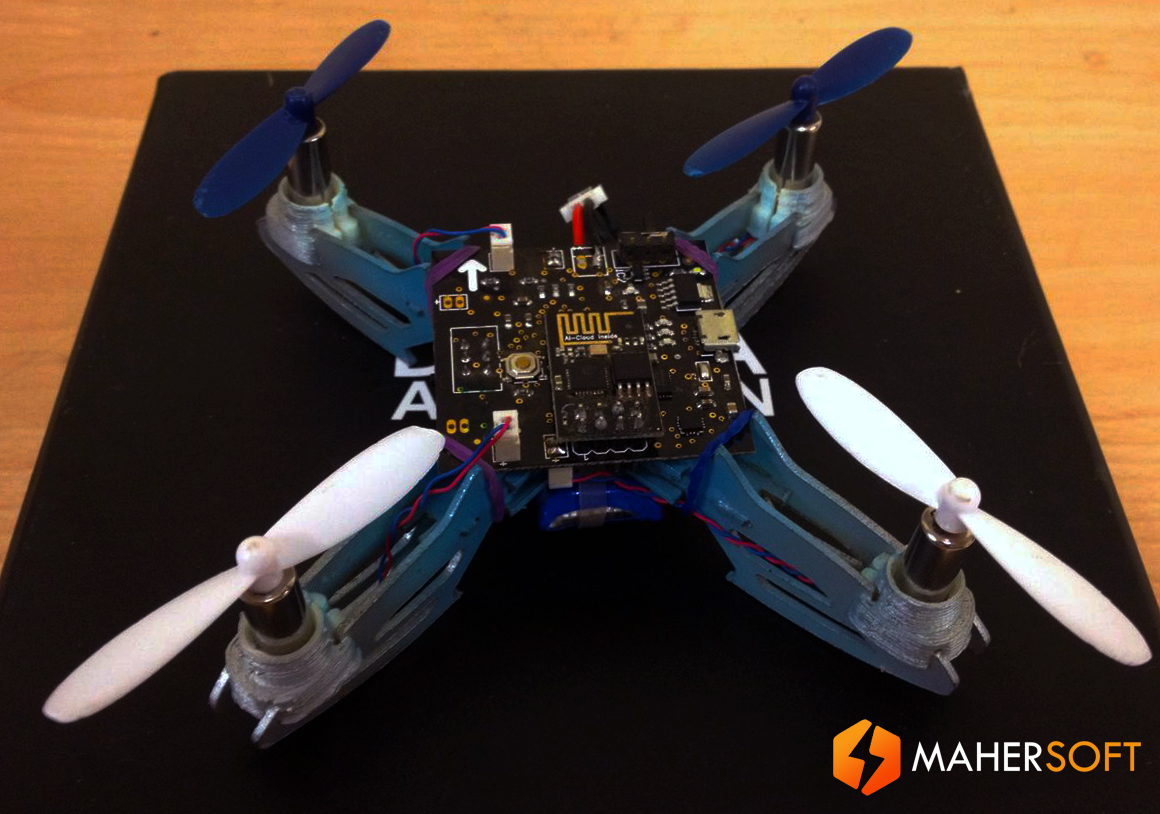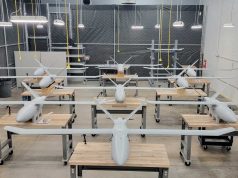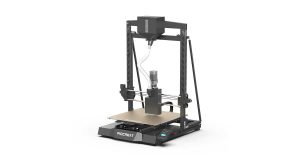So you’re a big fan of drones. But have you ever thought about how 3D printing can be used to manufacture drone spare parts? It’s not as crazy an idea as it might sound.
MaherSoft offers 3D Printing services to many engineering and design firms. Our clients approach us not only for prototyping of parts but also to produce end use finished products.
One such firm is India’s premier drone manufacturer Drona Aviation. They develop and sell DIY drone kits and provide weekly workshops to students and diy enthusiasts. MaherSoft partnered with Drona Aviation to develop the 3d printed motor holders and drone accessories which can be used in their drone models not only as a prototype but as a finished product for their production models.
Using 3D Printers for Drone Parts
Here is how we did it…
What’s the Best Material?
Choosing the right material based on the application was really important, because every gram of weight would cost flight time.
The heavier the drone, the faster battery will drain. Again, it would be inappropriate to try to navigate properly with an unstable construction made from weak parts.
With the progression of the 3d printing industry many “high-grade” 3D printing filaments are now available in the market. The extra-strong and durable alternatives to the widely used PLA and ABS will add an extra cash on some enhanced filament spools with carbon fiber. So, what is the right material which is durable, easy to print & cost effective. To simplify this process we jotted down the pros and cons of each material.
Here’s a quick summary:
PLA – The wide range of available colours and translucencies and glossy feel often attract those who print for display or small household uses. Many appreciate the plant based origins and prefer the semi-sweet smell over ABS. When properly cooled, PLA seems to have higher maximum printing speeds, lower layer heights, and sharper printed corners. Combining this with low warping on parts make it a popular plastic for home printers, hobbyists, and schools.
ABS – Its strength, flexibility, machinability, and higher temperature resistance make it often a preferred plastic for engineers, and professional applications. The hot plastic smell deter some as does the plastics petroleum based origin. It’s also cheap and widely available. However, you need a heated print bed for optimal results, and there are the dreaded toxic fumes to consider.
PLA / ABS – exotic filaments with fiberglass or carbon fiber are stable and rigid, but expensive. Also, they’re too brittle for crashes, and not very lightweight despite the fiber.
Nylon has excellent strength and temperature resistance, and is lightweight, but it’s not easy to print. Nylon is expensive as compared to other 3d printing filaments.
PET is stable and shockproof, but it is relatively expensive, and quite heavy.
Conclusion: Printing in PLA is easy and cost effective, but the part was breaking when the motor was pushed into the holder. On the other hand, ABS shows stable engineering properties, as it is more flexible than PLA and similarly priced. We therefore chose ABS to print production ready parts for Drona Aviation.
What Drone parts can you 3D print?
While it’s not yet possible to fabricate electrical components like motors, sensors or even electronics – but watch this space – it’s entirely possible to 3D print drone parts like the motor holders, landing gear, and propellers. And these are usually the parts that break easily. We started our iteration with motor holders which fit on the main body and the motor fits right into the centre. We had to develop 6 prototypes of the motor holder before it was approved for production on our Indie Desktop 3D Printer since motor holder has to assemble seamlessly to the main body along with the motor inside the holder.
Role of Printing Parameters in 3D Printers?
You must be wondering, why does take so many iterations to freeze a design for the production? The part strength and accuracy in 3d printing depends on Infill % , Layer Thickness , Shell Thickness , Speed , Temperature , Flow rate etc. Using our experience, we varied parameters like infill percentage in range of 40 % to 100 % to keep the part weight within the limit, the flow rate had to be varied in between 90-100 % & shell thickness from 0.8 to 1.2 mm to keep the dimensional tolerances in check. The printing speed plays a vital role for smaller parts when produced in large quantity. Slow speeds give you better part finish but effect’s the production rate hence we 3d printed at an optimal speed of 40 mm/s, which suited our production requirement against part quality.
Designing for 3D Printing
There are some key factors which must be taken into account while designing for 3D printing.
We had to be sure there were no overhangs to avoid any post processing hence, the parts were designed with an angle 45 degree to achieve support free parts. Support free design lead to a reduction in production time eventually reducing the cost per piece of the product.
Cost Reduction
Cost of any product is one of the driving force for any product to be sustainable. Hence, Maher Soft worked with Drona Aviation to not only improve the structural integrity of the 3D Printed part, but also reduce its cost by using the above design techniques and varying 3d printing parameters.
Maher Soft completed an order of 2000+ units of motor holders on its 3D Printers. All of the parts printed are production ready.
Below is a quick time lapse of 3d printing drone parts:
Subscribe to our Newsletter
3DPResso is a weekly newsletter that links to the most exciting global stories from the 3D printing and additive manufacturing industry.























